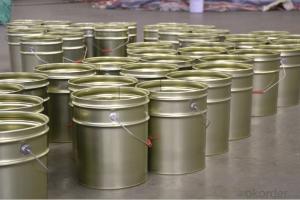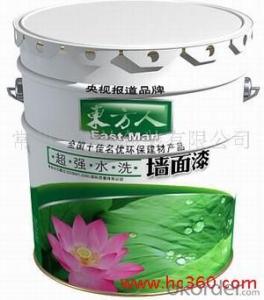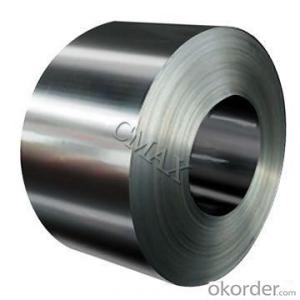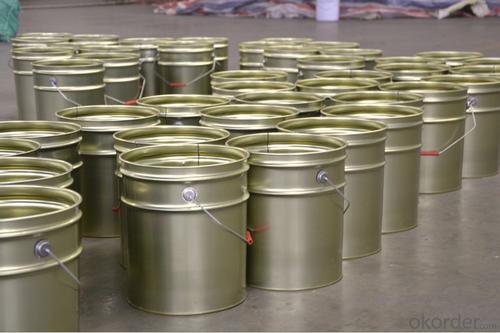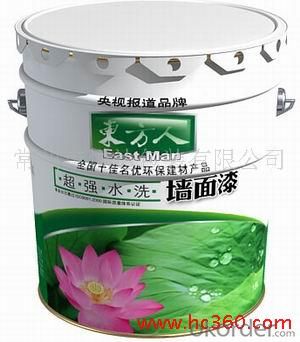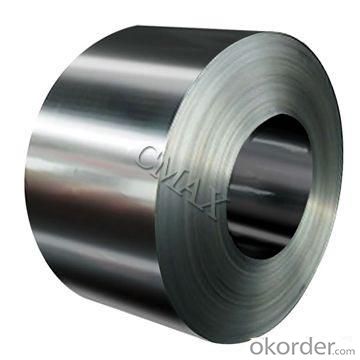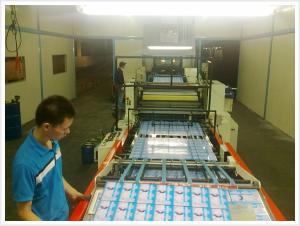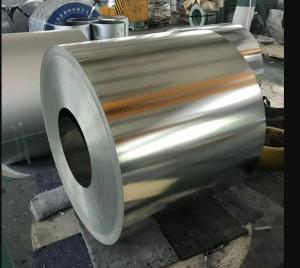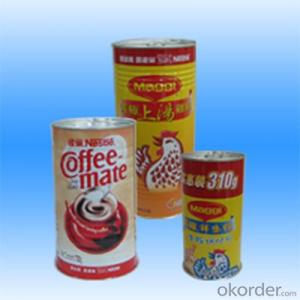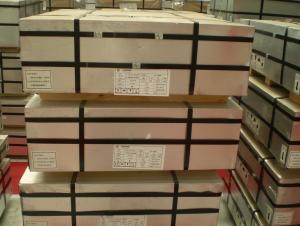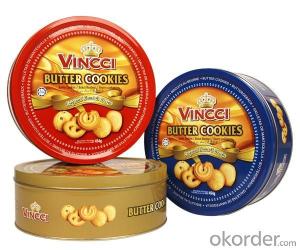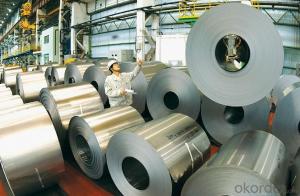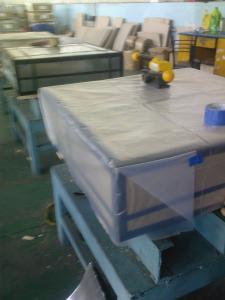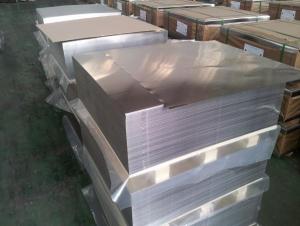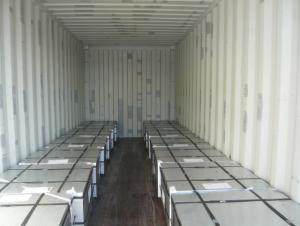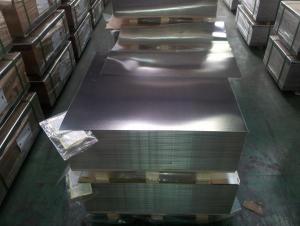Printed Tinplate For Industrial Usage, MR JIS G3303, Metal Package
- Loading Port:
- Tianjin
- Payment Terms:
- TT OR LC
- Min Order Qty:
- 25 m.t.
- Supply Capability:
- 40000 m.t./month
OKorder Service Pledge
OKorder Financial Service
You Might Also Like
1.Usage
Tinplate is widely used for making all types of containers, containing industrial usage such as paint can, oil can, aerosol cans etc., and food cans like milk powder cans, tomato paste can, dry food cans etc.
2. Quality
As a state owned company and a large tinplate supplier in China, our tinplate quality ranks 1st level in China, similar to Bao Steel, Posco etc.
3. Specification
standard: GB/T2520, JIS G3303, DIN EN10202
Material: MR /SPCC
Thickness available: 0.16-0.50MM
Width available: 600~1050MM
Temper grade: T1 – DR8
Tin coating: ordinary 2.8g/2.8g, 5.6g/5.6g and others
Package: sea worthy export package.
Applications: Tin can for chemicals & paint cans, industrial cans, food cans
4. Our factory photo & equipments

5. Our Markets:
now our tinplate has been sold to more than 50 countries, including Europe country, Gulf Area, South American, South Afric etc.
6. Our Overseas Wareouses:
Furthermore, in the year 2014, we have more than 10 overseas warehouses all over the word, located in KSA, UAE, Oman, Russia, Kuwait, Qatar, Oman, Chile, Brazil etc.
7. FAQ
a. what's the annual output?
about 500,000 tons per year.
b. where's the raw matrial from?
our hot rolled coil is purchased from Capital Steel and other state owned mill, with quite good quality.
c. how long is the delivery time?
normally for SPCC about 45~55 days, while 65~75 days for MR material
d. how to control the quality during production process?
inside our workshop, we have MES syestem. It realizes the optimization of the production procedure in the workshop. It could record each step of the whole production procedures, and if some problem appears, factory could easily found and take action, it’s quite helpful to monitor and control the quality.
- Q: How does tinplate perform in terms of lightness and portability?
- Tinplate performs well in terms of lightness and portability. It is a lightweight material that is easy to carry and transport, making it convenient for various applications.
- Q: How does tinplate contribute to sustainability efforts?
- Tinplate contributes to sustainability efforts by being a highly recyclable material. It can be used repeatedly without losing its properties, reducing the need for new resource extraction. Additionally, tinplate is commonly used for food and beverage packaging, which helps preserve products and reduces food waste. Its durability and corrosion resistance also extend the lifespan of products, making it a sustainable choice for various industries.
- Q: Can tinplate be used for packaging of hazardous materials?
- Yes, tinplate can be used for packaging of hazardous materials. Tinplate is known for its excellent strength, durability, and corrosion resistance properties, making it suitable for containing hazardous substances safely. Additionally, tinplate can be specially coated or lined to provide an extra layer of protection against any potential chemical reactions or leaks.
- Q: Can tinplate be shielded?
- Two kinds of materials of tinplate and paktong in general: tinplate is cheaper, weldability is good, but easy to rust, and relatively soft, compared to a large shield narrow cover will have problems. Alpaka relatively high prices, the weldability is poor, but can provide performance through tin, relativelyhard. At present, the use of shielding in the mobile phone, these two materials are more, but taking into account the cost or priority of tinplate
- Q: What is the shelf life of tinplate?
- The shelf life of tinplate can vary depending on various factors such as storage conditions and the presence of any protective coatings. However, tinplate typically has a long shelf life, often lasting several years or more if stored properly in a cool, dry place.
- Q: What are the advantages of using tinplate for aerosol cans?
- Some advantages of using tinplate for aerosol cans include its durability, corrosion resistance, and ability to maintain product quality. Tinplate cans offer a longer shelf life for aerosol products as they prevent air and moisture from entering the can, ensuring the product remains fresh and effective. Additionally, tinplate cans are lightweight, making them convenient for transportation and storage. They are also recyclable, contributing to sustainability efforts.
- Q: Can tinplate packaging be used for pet food products?
- Yes, tinplate packaging can be used for pet food products. Tinplate is a suitable material for packaging pet food due to its durability, resistance to corrosion, and ability to maintain the freshness and quality of the food. Additionally, tinplate cans are also safe for pets as they do not leach harmful chemicals into the food.
- Q: How is tinplate coated for construction materials?
- Tinplate is coated for construction materials through a process called electrolytic tinning. This involves immersing the steel sheet in an electrolyte bath and passing an electric current through it. The electric current causes tin ions to be reduced and deposited onto the steel surface, forming a thin layer of tin coating. This coating provides corrosion resistance and enhances the durability of the construction materials.
- Q: How is tinplate used in the automotive industry?
- Tinplate is commonly used in the automotive industry for manufacturing various components such as fuel tanks, exhaust systems, and body panels. It provides excellent corrosion resistance, making it suitable for protecting these parts from rust and other environmental damage. Additionally, tinplate is lightweight yet strong, contributing to fuel efficiency and overall vehicle performance.
- Q: How is tinplate used in the pet food industry?
- Tinplate is commonly used in the pet food industry for packaging purposes. It is an ideal material for manufacturing cans and containers that store pet food due to its durability, resistance to corrosion, and ability to maintain food freshness and quality. Tinplate cans are also easily stackable, making them convenient for storage and transportation.
Send your message to us
Printed Tinplate For Industrial Usage, MR JIS G3303, Metal Package
- Loading Port:
- Tianjin
- Payment Terms:
- TT OR LC
- Min Order Qty:
- 25 m.t.
- Supply Capability:
- 40000 m.t./month
OKorder Service Pledge
OKorder Financial Service
Similar products
Hot products
Hot Searches
Related keywords
